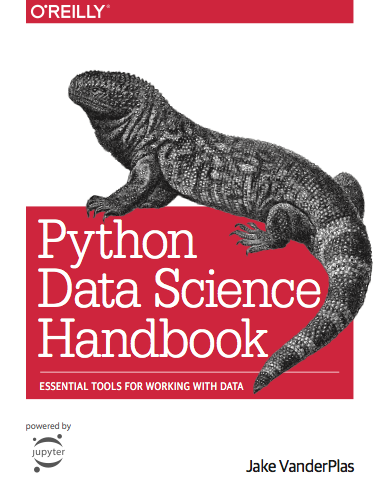
Python Data Science Handbook
The book introduces the core libraries essential for working with data in Python: particularly IPython, NumPy, Pandas, Matplotlib, Scikit-Learn, and related packages. Familiarity with Python as a language is assumed.
Tag(s): Data Science Python
Publication date: 01 Nov 2016
ISBN-10: n/a
ISBN-13: 9781491912058
Paperback: 548 pages
Views: 16,838
Type: Book
Publisher: O’Reilly Media, Inc.
License: Creative Commons Attribution-NonCommercial-NoDerivs 3.0 United States
Post time: 28 Jul 2020 10:00:00
Python Data Science Handbook
 The book introduces the core libraries essential for working with data in Python: particularly IPython, NumPy, Pandas, Matplotlib, Scikit-Learn, and related packages. Familiarity with Python as a language is assumed.
The book introduces the core libraries essential for working with data in Python: particularly IPython, NumPy, Pandas, Matplotlib, Scikit-Learn, and related packages. Familiarity with Python as a language is assumed.
Publication date: 01 Nov 2016
ISBN-10: n/a
ISBN-13: 9781491912058
Paperback: 548 pages
Views: 16,838
Document Type: Book
Publisher: O’Reilly Media, Inc.
License: Creative Commons Attribution-NonCommercial-NoDerivs 3.0 United States
Post time: 28 Jul 2020 10:00:00
Share — copy and redistribute the material in any medium or format
The licensor cannot revoke these freedoms as long as you follow the license terms.
Click here to read the full license.
For many researchers, Python is a first-class tool mainly because of its libraries for storing, manipulating, and gaining insight from data. Several resources exist for individual pieces of this data science stack, but only with the Python Data Science Handbook do you get them all—IPython, NumPy, Pandas, Matplotlib, Scikit-Learn, and other related tools.
Working scientists and data crunchers familiar with reading and writing Python code will find this comprehensive desk reference ideal for tackling day-to-day issues: manipulating, transforming, and cleaning data; visualizing different types of data; and using data to build statistical or machine learning models. Quite simply, this is the must-have reference for scientific computing in Python.
More Resources:
Tweet
About The Author(s)
Jake VanderPlas was formerly both the Director of Open Software and the Director of Research in Physical Sciences for the eScience Institute; he now works at Google. He comes from a background of machine learning and data-intensive astronomy and astrophysics.
